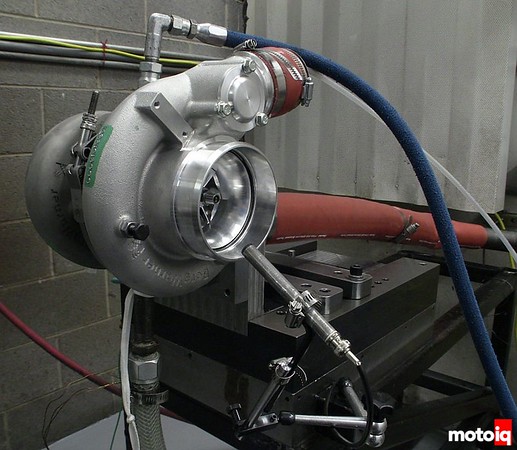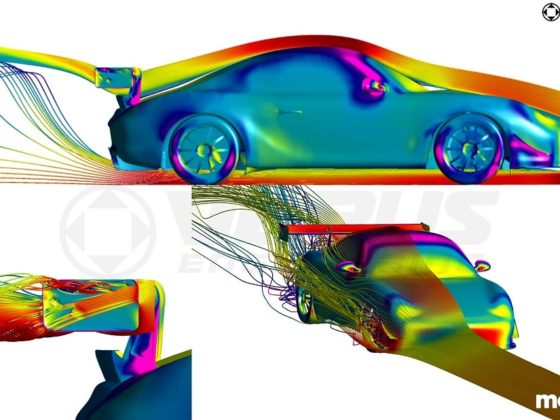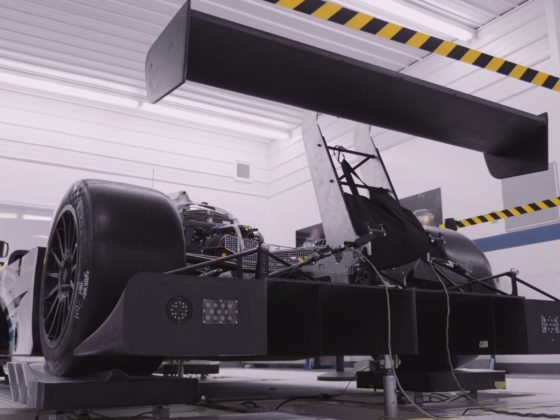Integrated Blow Off Valve
An integrated compressor recirculation valve (CRV) is included with every EFR turbo. An optional block-off kit is available from BW in case you still want to use a conventional external valve. The excess charge air is released directly back at the compressor wheel in an attempt to further reduce lag. The diaphragm used in the BorgWarner CRV is actually the same part that has been supplied by the millions to the OEMs and were designed to last the life of the car. How’s that for a reliable track record? The CRV has a fairly low valve lift and isn’t very large, but it is more than enough to relieve pressure to avoid compressor surge. There’s a general misunderstanding in our tuning industry of how large a blow off valve really needs to be to in order to get the job done. Large external BOVs (e.g. TiAL 50mm, Turbosmart Raceport, etc.) definitely have their place. However, the BorgWarner CRV works great on high powered race cars like the PZ Tuning Civic and the creations of Papadakis Racing. Good enough for them, good enough for you.

Forged Milled Compressor Wheels
Another great feature of the Series EFR turbos are the super robust compressor wheels. They are milled from 6000 series aluminum forgings for the ultimate in strength and durability. Sure, some of the smaller turbo shops make billet compressor wheels out of bar stock, but the grain structure and surface hardness of a forged part is superior in every way. What this means to you is less rock chips and jacked up blades and a lower likelihood of burst damage.

Turbo Speed Sensor Bung
We are not sure why other turbo suppliers didn’t do this before the BorgWarner EFR, but with about 15 minutes of thought the BW engineers created a super helpful tool for professional engine builders and tuners – cast speed sensor bungs. They’re already machined for you too! All you have to do, should you want to purchase the optional turbo speed sensor, is drill through the blind hole using a 1/4” drill bit. Then the BW turbo speed sensor drops right in to the perfect sensor gap height. There’s no dicking around with an oscilloscope to verify your sensor gap or anything of the sort. If you have an advanced ECU like the Pectel SQ/MQ series or Cosworth ECPro, you can directly connect the speed sensor to one of the many spare digital inputs at the ECU and start utilizing the many turbo speed and boost control strategies offered. If you don’t have a baller ECU, not to worry. There are various suppliers of frequency to 0-5v converters that you can buy and rig up. Turbo speed is a fairly important, but often ignored parameter that can help the monitoring of turbo performance. It’s also an indicator of the charge system health since turbo speed goes up considerably when there’s a boost leak of some sort. Once you have it, you hate to live without it.
Boost Control Solenoid Valve
A three port solenoid is included with the purchase of every EFR turbo. What? You’re not using electronic boost control? Step into the 21st century, buddy. This isn’t 1965 and you aren’t driving a Chevy Corvair. The included solenoid is ultra reliable and is supplied by Pierburg who supplies boost control solenoids to Ford, Bugatti, and Prodrive to name a few. It’s a 23 ohm, sub 30Hz solenoid that is compatible with most ECUs for flexibility.
High Flow Internal Wastegates
On the housings with internal wastegates, the large valve areas are designed to bypass as much as 40% of the exhaust gases from the turbine wheel. For the T25 flanged turbine housings, the wastegate valve is 36mm and for the T3 and T04 turbine housings the wastegate valve is 42mm. If your application requires a twin scroll T04 flange, then you’re in luck! The twin scroll T04 housing bypasses gasses from both scrolls, which made it the first aftermarket performance and racing turbocharger to offer a twin scroll internally wastegated turbine housing. This also made it ideal for diesel applications since most diesel internal wastegate twin scroll housings only pull from one scroll.

Ease of Orientation and Wastegate Positioning
Have you ever taken an internal wastegate turbo designed for another car and then tried to install it into another? It was a serious pain in the ass, wasn’t it? You probably had to fabricate a new wastegate actuator bracket, fabricate or locate another turnbuckle on the actuator, and then found that you could only really clock the turbo and actuators at certain angles due to the lack of flexibility. It’s not the turbo manufacturer’s fault, since the turbo was probably originally designed for a Nissan, Subaru, Ford, or Pontiac. The BW Series EFR turbos address the flexibility issue by utilizing an ingenious method of wastegate actuator and bracket positioning and a ridiculously simple turnbuckle system that also allows for simple wastegate preload adjustment. Wastegate actuators are available in three different preloads (low, medium, and high). These features are great for the DIY guy and professional alike.



